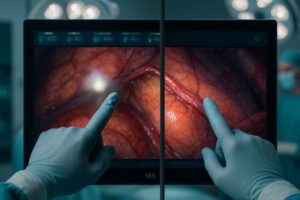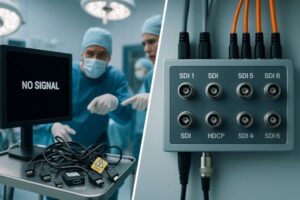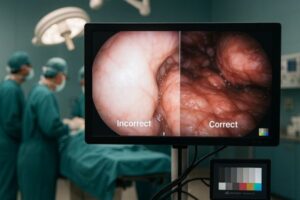Struggling with dim monitor images in a brightly lit OR? This impacts visibility and can compromise surgical precision. Let’s uncover what brightness level truly defines a "medical-grade" surgical monitor.
A true "medical-grade" surgical monitor needs significantly high brightness, often exceeding 700 cd/m², to maintain image clarity and contrast against intense ambient surgical lights. This ensures surgeons see critical details without compromise, unlike standard displays.
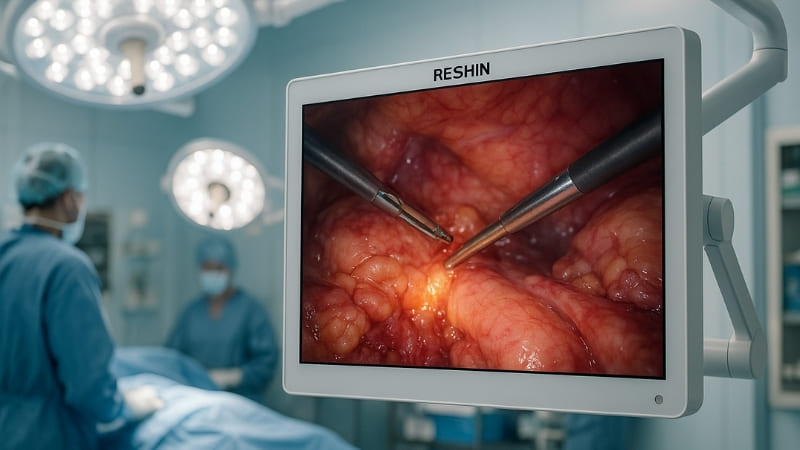
We are a specialist monitor manufacturer. We often hear from surgeons and OR managers about the challenges of viewing displays in the operating room1. The unique lighting conditions in an OR are very demanding. Not just any monitor can perform well under these circumstances.
"Medical-grade2" is a term that gets used a lot. But what does it really mean when we talk about the brightness of a surgical monitor3? It’s more than just a label. It’s about ensuring that the display can perform reliably and clearly in a critical environment where patient safety is paramount. Understanding the specifics of brightness helps in choosing the right equipment. This choice directly impacts how well a surgeon can see, and consequently, how well they can perform their job.
What Are the Exact Brightness Standards for Surgical Monitors?
Are you unsure what brightness level your surgical monitor really needs? Picking a monitor without knowing this can lead to poor visibility.
While no single universal standard mandates an exact number for all surgical monitors, clinical best practice and expert recommendations suggest a minimum of 700 cd/m² for primary surgical displays. This ensures clear visibility in brightly lit OR environments.

It’s a common question I encounter: "Is there a specific number I should look for?" The answer is not always straightforward because different surgical procedures and OR setups can have slightly varied needs. However, my first personal insight provides a strong guideline: Surgical monitors should offer at least 700 cd/m² brightness4 to ensure visibility even under intense surgical lighting. This isn’t a number pulled out of thin air. It comes from understanding the very harsh lighting conditions in an operating room. Surgical field lights are incredibly bright. They are designed to illuminate the surgical site deeply. This ambient light can easily wash out a monitor that isn’t bright enough. While some regulatory bodies might provide general guidelines for medical displays, specific figures for surgical monitor brightness5 often come from industry best practices and the practical experience of medical professionals and manufacturers like us at Reshin. We’ve learned through years of development and feedback that this level of brightness is a critical starting point for ensuring consistent image quality.
Understanding Brightness Units and Context
Brightness is typically measured in candelas per square meter (cd/m²), sometimes referred to as "nits."
- Standard Office Monitor: Around 250-350 cd/m².
- Consumer TV: Around 300-500 cd/m² (though some HDR TVs go higher).
- Surgical Monitor Recommendation: 700 cd/m² or more.
This comparison clearly shows why a standard monitor just won’t do the job in the OR. The display needs to be significantly brighter to compete with the ambient light.
Why Is Higher Brightness Necessary Under Surgical Lighting?
Ever wondered why ORs need such bright monitors? Using a dim screen in surgery is like trying to see in fog.
Higher brightness is crucial in operating rooms to counteract the intense ambient surgical lights. It ensures the displayed image remains clear, with good contrast and accurate color representation, which is vital for precise surgical work.
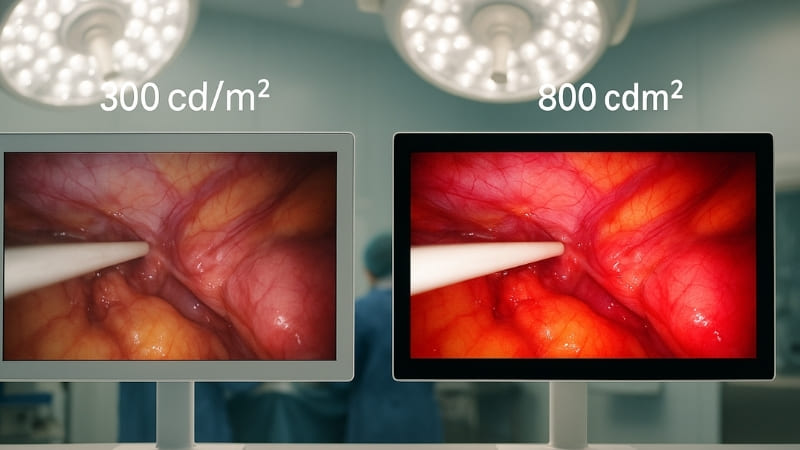
The operating room environment is unlike any other. Surgeons work under extremely powerful overhead lights. These lights are designed to provide excellent illumination of the surgical field, which is of course essential. However, this intense light also spills onto surrounding equipment, including the surgical monitors6. My second insight gets to the heart of this: High brightness enhances image clarity and supports more accurate and safer surgical decisions.7 If a monitor isn’t bright enough, the powerful OR lights will simply overwhelm the image displayed. This causes the image to appear washed out, with poor contrast and faded colors. Details can be lost, especially in darker areas of the image. Imagine a surgeon trying to distinguish subtle variations in tissue texture or identify small blood vessels on a dim, washed-out screen. This is not just an inconvenience; it can directly impact the surgeon’s ability to operate with precision and confidence. Therefore, a high-brightness monitor isn’t a luxury; it’s a fundamental requirement for maintaining optimal visualization in the demanding conditions of the OR8. It ensures that the image the surgeon sees is a true and clear representation of what the camera or imaging device is capturing.
The Impact of Ambient Light
- Washout Effect: Ambient light reflects off the screen surface, reducing contrast and making the image appear faded.
- Detail Obscuration: Darker areas of the image become harder to distinguish as the screen cannot emit enough light to overcome the ambient reflections.
- Color Distortion: Perceived colors can shift if the monitor’s light output is too low relative to the ambient light.
A brighter monitor can push through this ambient interference, maintaining image integrity.
What Are the Potential Risks of Inadequate Monitor Brightness During Surgery?
Think a slightly dim monitor is no big deal? Even small visual errors during surgery can have serious consequences.
Inadequate monitor brightness can lead to misinterpretation of anatomical structures, difficulty in identifying bleeding, and reduced ability to discern subtle tissue changes. This increases the risk of surgical errors and can compromise patient safety.
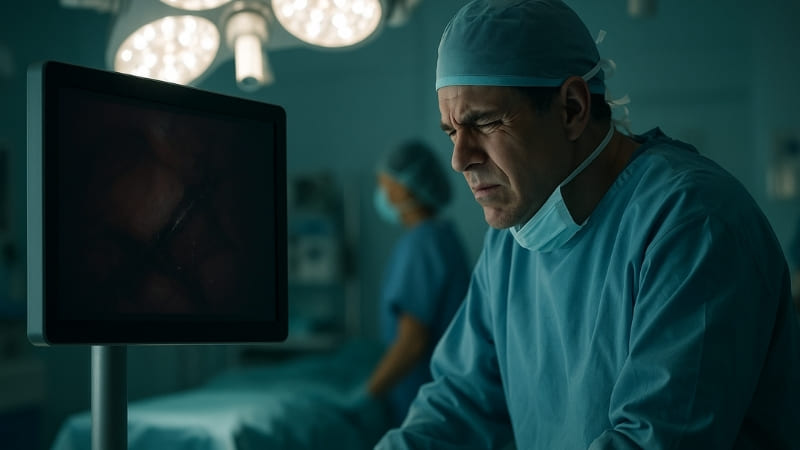
The consequences of using a surgical monitor with insufficient brightness can be significant. It’s not just about a less-than-optimal viewing experience. It directly ties into patient safety and surgical outcomes. My third personal insight is very clear on this: Monitors with insufficient brightness can cause grayscale washout and detail loss, increasing diagnostic risks.9 During a surgical procedure, the surgeon relies heavily on the visual information presented on the monitor. This is especially true in minimally invasive surgeries where the surgeon’s view is entirely mediated by the camera and display system. If the monitor’s brightness is too low, crucial details in the image can be lost10. For example, subtle differences in tissue color that might indicate ischemia or abnormal tissue could be missed. Small bleeders might not be as readily apparent. The fine details of anatomical structures can become obscured, making precise dissection more challenging and potentially hazardous. In essence, a dim monitor forces the surgeon to work with incomplete visual information. This can lead to increased procedure times11, as the surgeon may struggle to see clearly, and more critically, it can elevate the risk of intraoperative complications.
Specific Risks Associated with Low Brightness:
| Risk Category | Specific Example | Potential Consequence |
|---|---|---|
| Detail Obscuration | Difficulty distinguishing fine nerves or blood vessels from surrounding tissue. | Inadvertent damage to critical structures. |
| Poor Contrast | Inability to clearly see the margins of a tumor or lesion. | Incomplete resection or damage to healthy tissue. |
| Color Inaccuracy | Misjudging tissue viability due to altered color perception. | Incorrect clinical decisions. |
| Increased Eye Strain | Surgeons straining to see details on a dim, washed-out screen. | Fatigue, reduced concentration, potential for error. |
| Delayed Recognition | Slower identification of active bleeding points. | Increased blood loss. |
These risks underscore why selecting a monitor with appropriate brightness is not just a technical choice, but a critical safety consideration.
How Can We Tell if a Surgical Monitor’s Brightness Meets Clinical Requirements?
How can you be sure a monitor is truly bright enough for your OR? Simply trusting a spec sheet might not be enough for such a critical tool.
Beyond checking the manufacturer’s specification for peak brightness (aiming for ≥700 cd/m²), evaluate its brightness uniformity across the screen, its performance under actual OR lighting, and its ability to maintain brightness over its lifespan. User feedback and demos are also valuable.
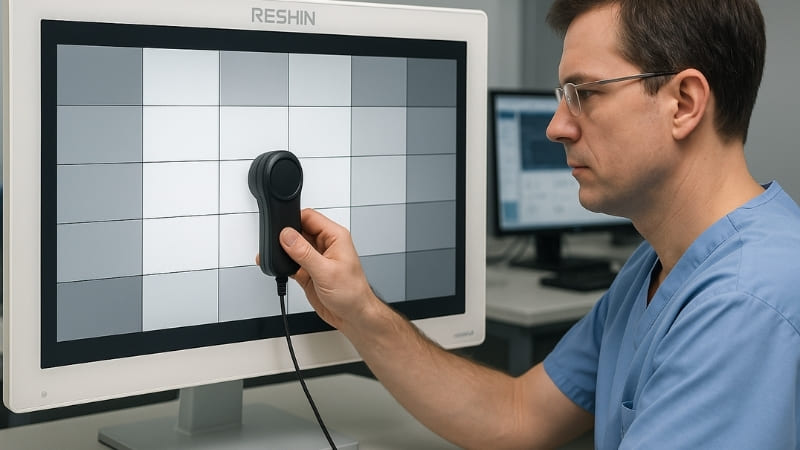
Determining if a surgical monitor’s brightness meets the demanding clinical requirements of an operating room involves more than just looking at a single number on a specification sheet. While peak brightness is a key starting point12 – and as I’ve mentioned, we at Reshin recommend aiming for at least 700 cd/m² – other factors are equally important. My fourth insight touches upon this: Evaluating brightness requires more than peak numbers — uniformity and long-term stability matter, too.13 A monitor might claim a high peak brightness in the center, but if the brightness drops off significantly towards the edges, then the effective viewing area is compromised. Uniformity ensures that the image is consistently bright across the entire screen. Furthermore, the monitor must be able to sustain its brightness levels over thousands of hours of use. Some displays may be bright when new but dim considerably over time. Dr. Amy Chen, the surgical imaging engineer I often work with, always insists on seeing how a monitor performs in their actual OR environment, under their specific surgical lights, before making a purchase decision. She also looks for features like ambient light sensors and automatic brightness stabilization14, which help maintain optimal viewing conditions.
Key Evaluation Points:
- Peak Luminance: Check the manufacturer’s specification (aim for ≥700 cd/m²).
- Brightness Uniformity: Does the brightness remain consistent across the entire screen surface? Look for specifications or test reports on uniformity.
- Long-Term Stability: Inquire about the monitor’s expected lifespan and how well it maintains brightness over time. Look for technologies that ensure stable brightness.
- Performance Under OR Lights: If possible, arrange a demonstration in your OR to see how the monitor performs in your specific lighting conditions.
- DICOM GSDF Compliance: For grayscale imaging, ensure the monitor can be calibrated to the DICOM Grayscale Standard Display Function, which is crucial for accurate representation of medical images, and brightness plays a role in achieving this.
A comprehensive evaluation will give you much greater confidence that the monitor you choose will perform as needed.
What Makes Reshin Surgical Monitors Stand Out in Terms of Brightness?
With many monitors on the market, what makes Reshin a reliable choice for brightness? Choosing the wrong brand can lead to disappointment and wasted investment.
Reshin surgical monitors are engineered with high-quality, high-output LED backlights and advanced optical designs. This ensures sustained high brightness levels, excellent uniformity, and resistance to washout from intense surgical lights, delivering consistently clear images.
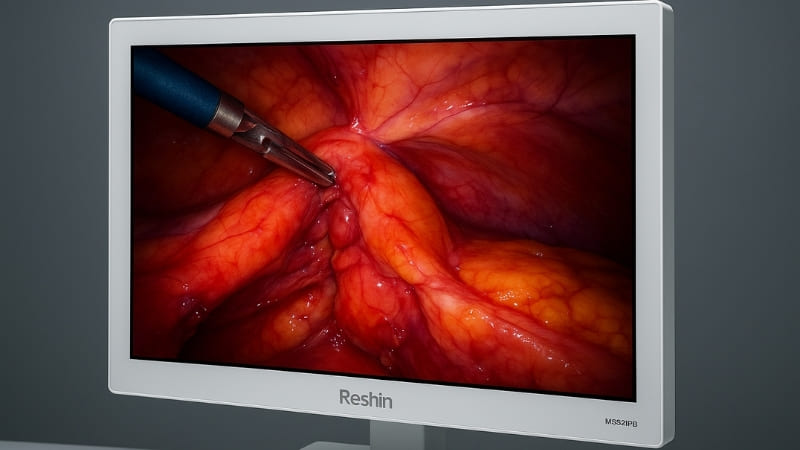
At Reshin, we understand that exceptional brightness is not just a feature, but a cornerstone of a reliable surgical display. My fifth personal insight summarizes our commitment: Reshin surgical monitors deliver high brightness15, color fidelity, and ambient light resistance — trusted in demanding OR settings. We achieve this through careful engineering and the use of high-quality components. Our monitors utilize advanced LED backlight technology16 specifically chosen for its ability to produce high luminance levels consistently over a long operational life. We also pay close attention to the optical design of the screen itself, incorporating anti-reflective coatings17 and optical bonding techniques where appropriate. These help to minimize glare from ambient OR lights and improve contrast, making the image appear even clearer and more vibrant. It’s not just about hitting a peak brightness number; it’s about delivering a visually superior and reliable image that surgeons can depend on, procedure after procedure. We also build in features like brightness stabilization circuits, which actively monitor and adjust the backlight to maintain consistent output. This means that from the first use to many thousands of hours later, a Reshin monitor is designed to deliver the brightness needed for critical surgical visualization. We aim to provide displays that truly enhance the surgeon’s ability to see, decide, and act with confidence.
Reshin’s Approach to Brightness and Clarity:
- High-Output LED Backlights: Selected for their high brightness capability and long lifespan.
- Brightness Stabilization Technology: Ensures consistent luminance throughout the monitor’s operational life and during each use.
- Anti-Reflective (AR) Coatings: Reduces glare from intense overhead surgical lights, improving perceived contrast.
- Optional Optical Bonding: Fills the air gap between the LCD panel and the protective glass, reducing internal reflections and enhancing contrast and readability in high ambient light.
- Rigorous Testing: Each monitor undergoes stringent quality control to ensure it meets our high brightness and uniformity standards.
This combination of design choices and quality control allows us to confidently state that our surgical monitors are built to perform exceptionally well in the brightest operating room environments.
Conclusion
True medical-grade surgical monitors need over 700 cd/m² brightness. This ensures clear visibility, detail, and safety under intense OR lights, which Reshin monitors reliably provide.
-
Learning about the challenges faced in the operating room can provide insights into the importance of specialized monitors for surgical success. ↩
-
Understanding the true meaning of ‘medical-grade’ can help you choose the right surgical monitor for optimal performance and safety. ↩
-
Exploring the significance of brightness in surgical monitors can enhance your knowledge on how it affects surgical outcomes and patient safety. ↩
-
Understanding the optimal brightness for surgical monitors is crucial for ensuring visibility in bright operating room conditions. Explore this link to learn more. ↩
-
Discover the significance of brightness in surgical monitors and how it impacts surgical outcomes and visibility in the OR. ↩
-
Learn about the essential features of surgical monitors that ensure clarity and precision during operations. ↩
-
Explore this link to understand how high brightness monitors can significantly improve surgical outcomes and decision-making. ↩
-
Discover strategies and technologies that enhance visualization in ORs, crucial for successful surgeries. ↩
-
Understanding the risks associated with low-brightness monitors can enhance patient safety and surgical outcomes. Explore this link for detailed insights. ↩
-
Discover how crucial details can be missed during surgery due to low monitor brightness, impacting patient safety and outcomes. ↩
-
Learn how monitor brightness can affect the efficiency of surgical procedures and potentially lead to longer operation times. ↩
-
Discover the significance of peak brightness in surgical monitors and how it impacts clinical outcomes. This information is essential for making informed choices. ↩
-
Understanding the evaluation of surgical monitor brightness is crucial for ensuring optimal performance in critical environments. Explore this resource for in-depth insights. ↩
-
Learn how these features enhance surgical monitor performance, ensuring consistent visibility in varying lighting conditions. This knowledge is vital for informed purchasing decisions. ↩
-
Explore how high brightness enhances visibility and reliability in surgical settings, crucial for successful procedures. ↩
-
Learn about the advantages of LED backlight technology in surgical monitors for better image quality and longevity. ↩
-
Discover how anti-reflective coatings reduce glare and improve image clarity, essential for surgical precision. ↩

